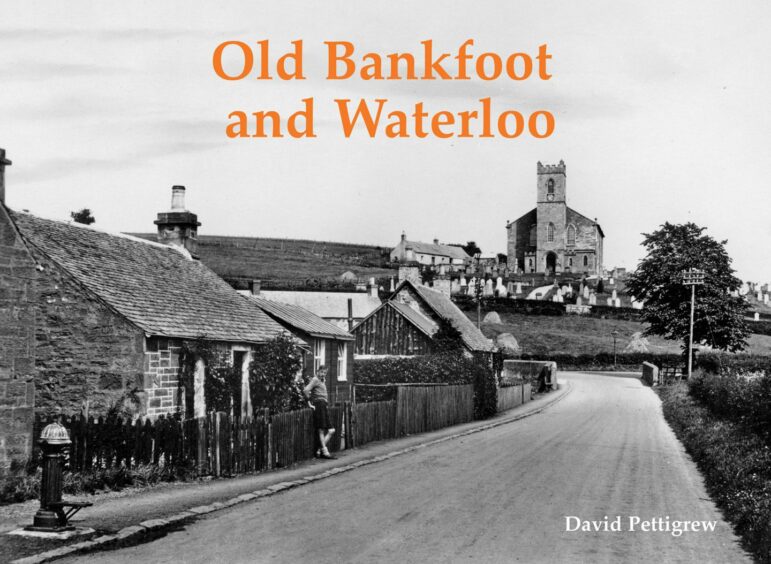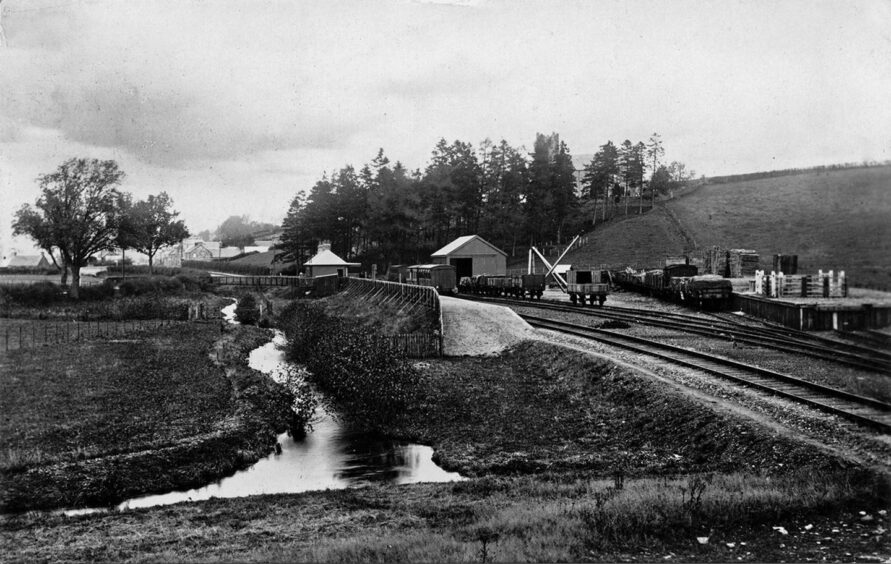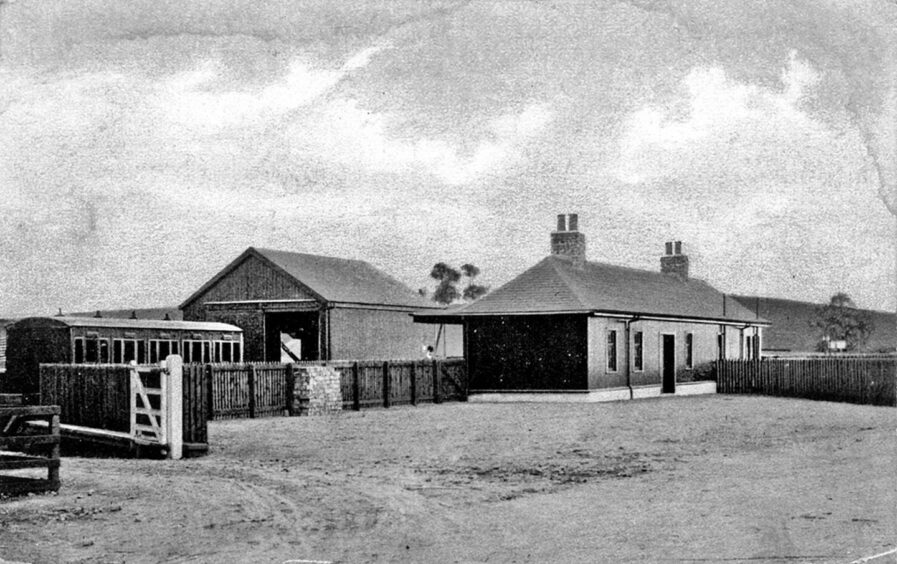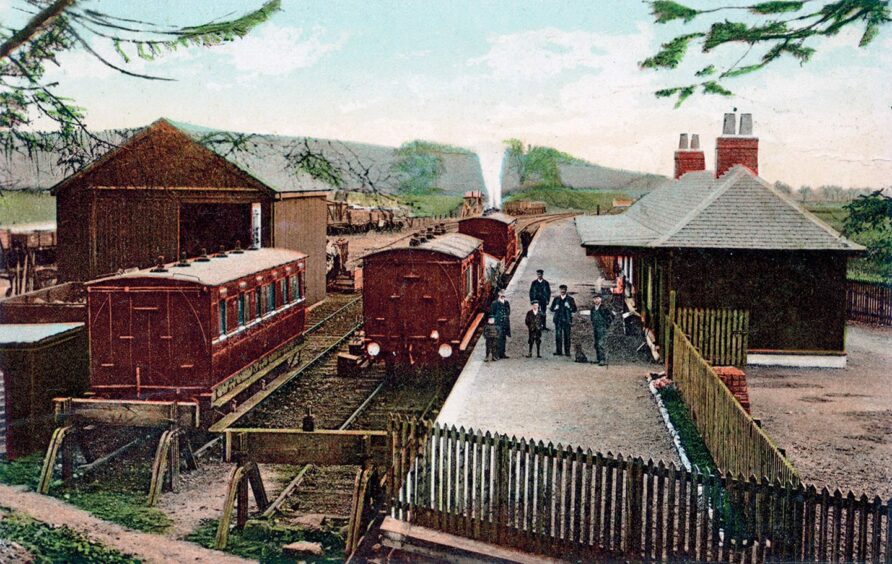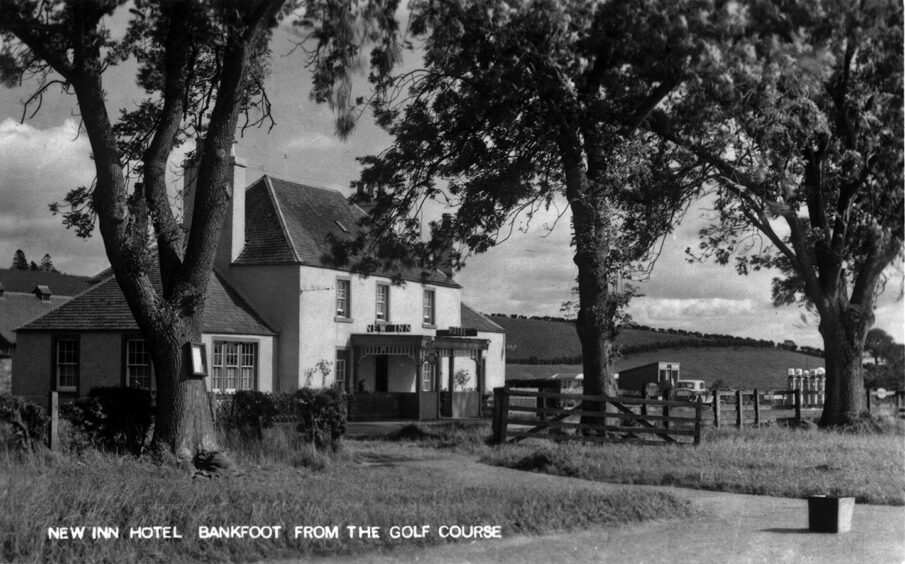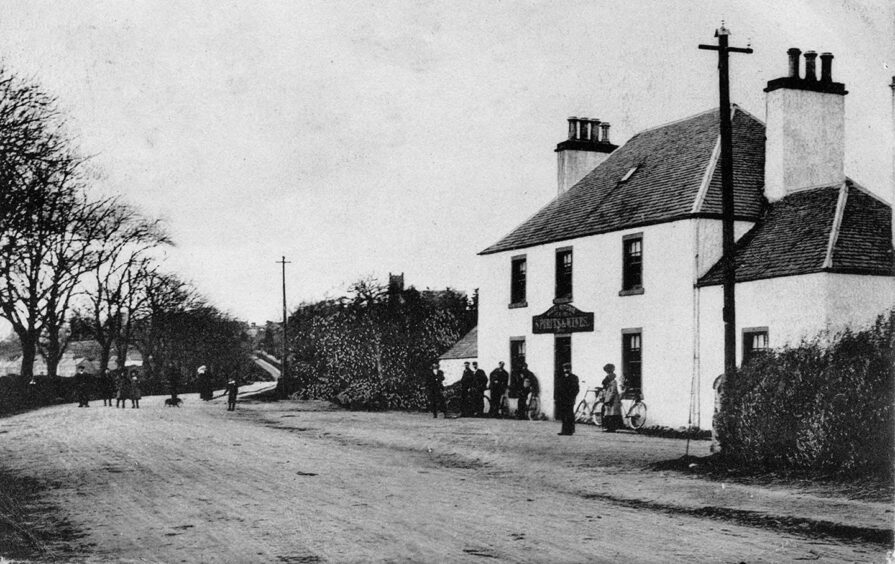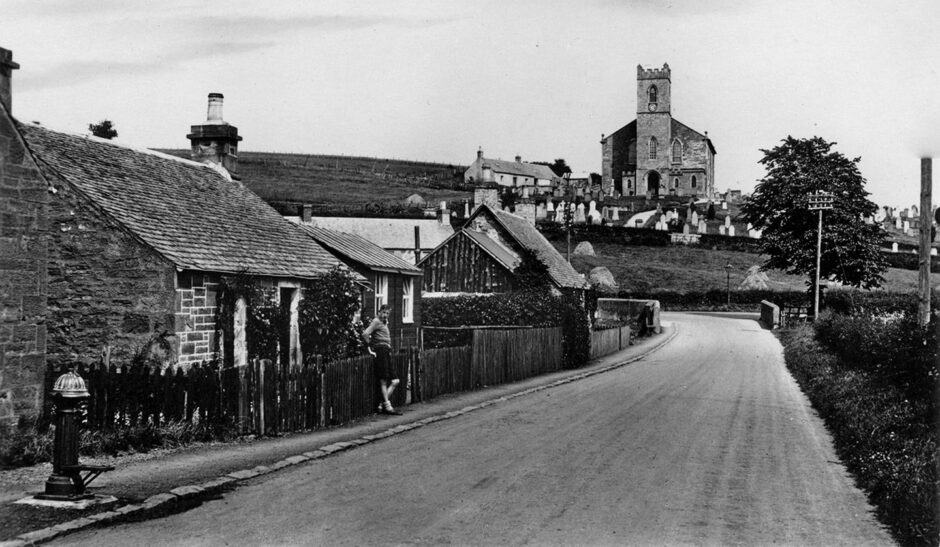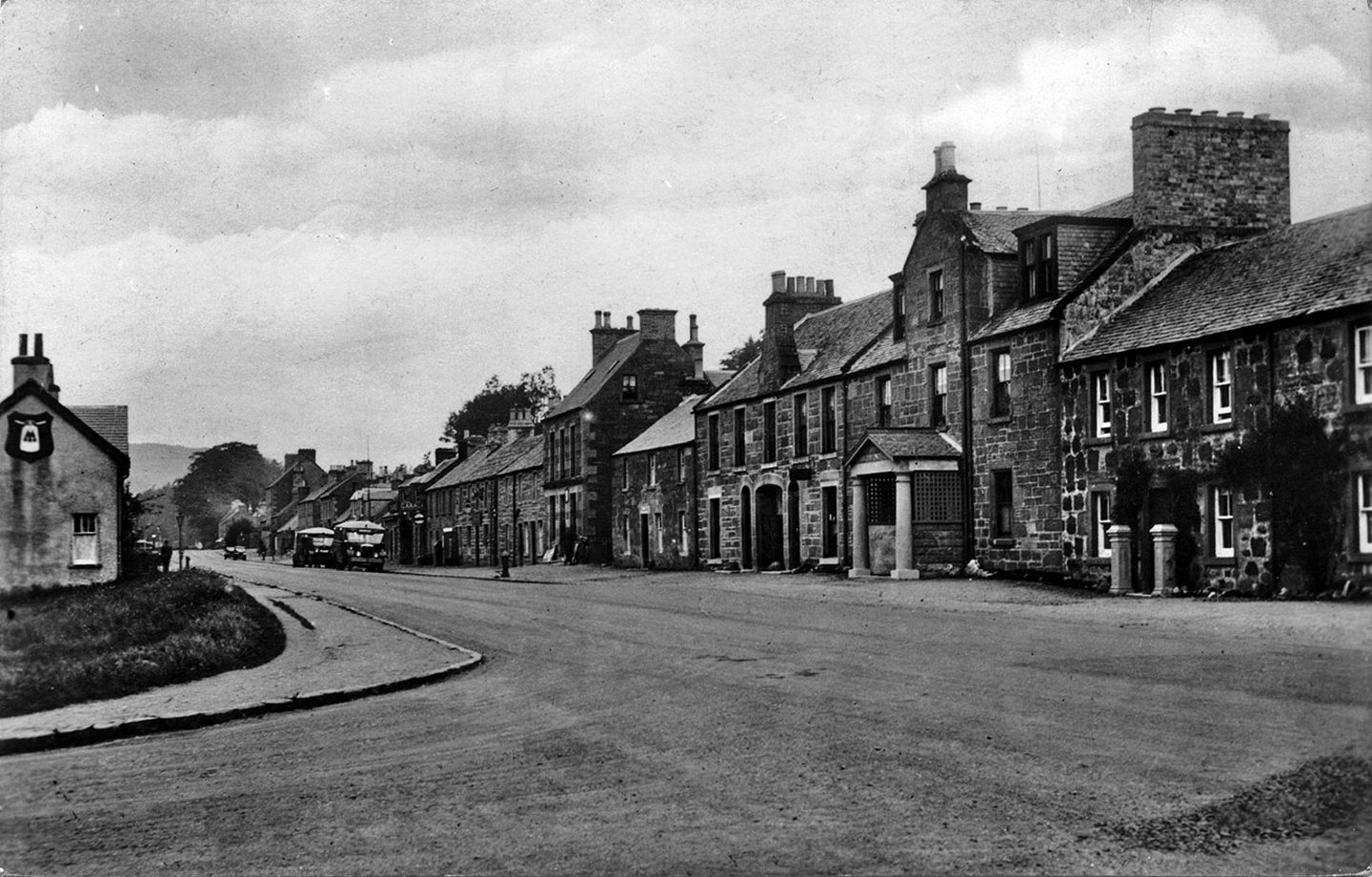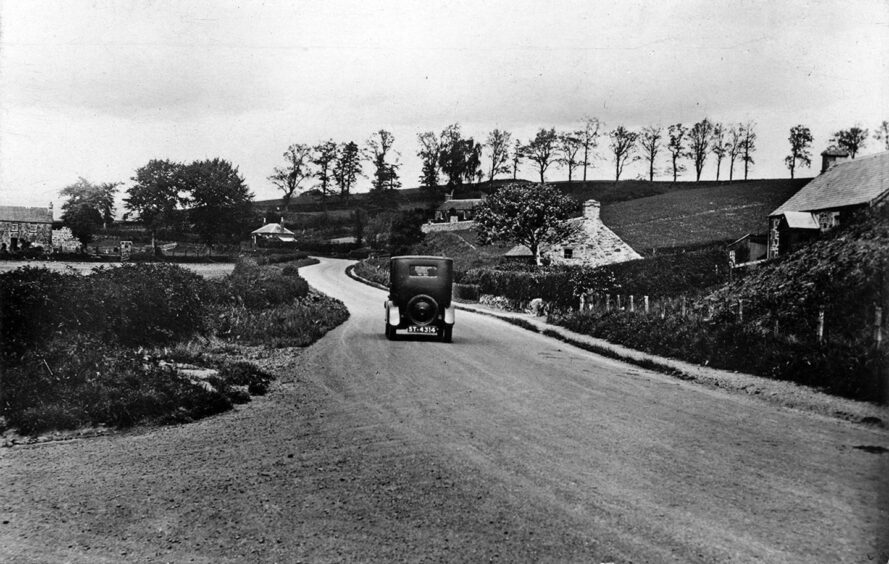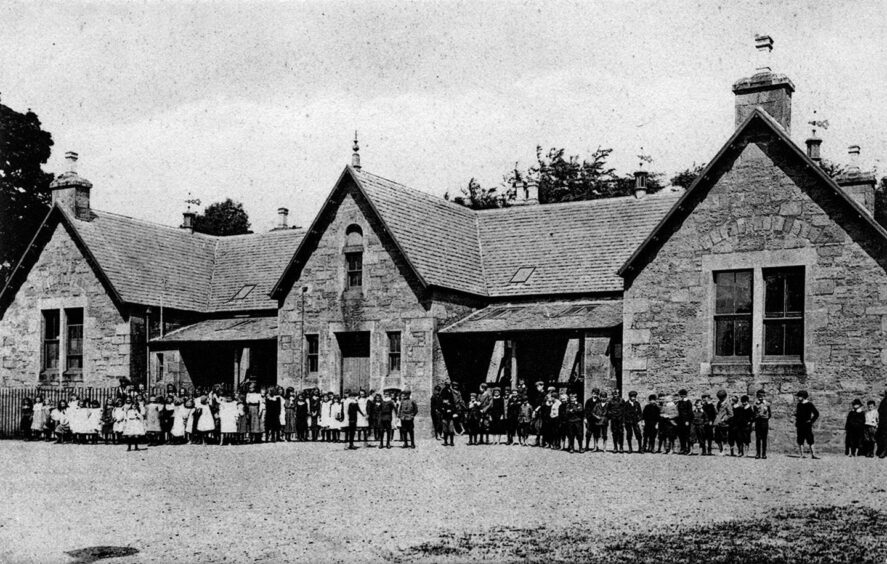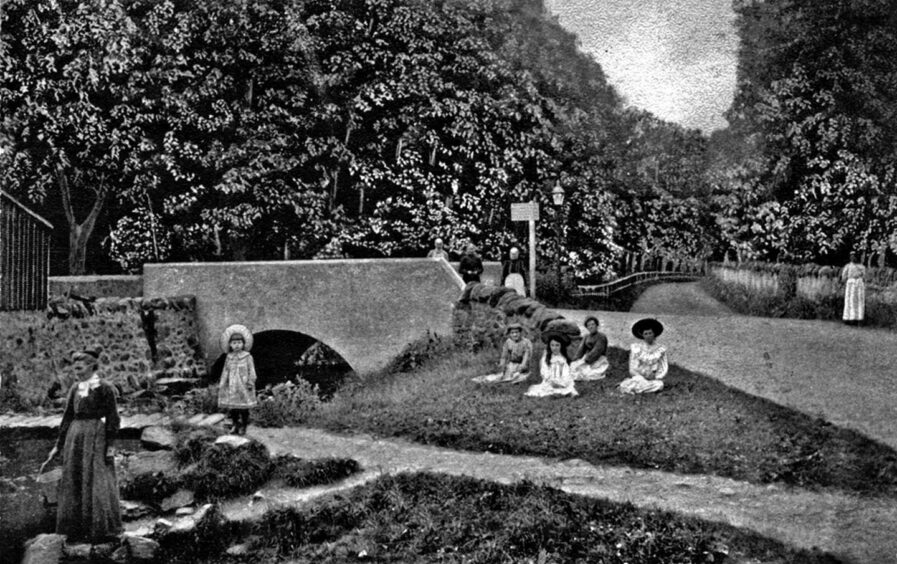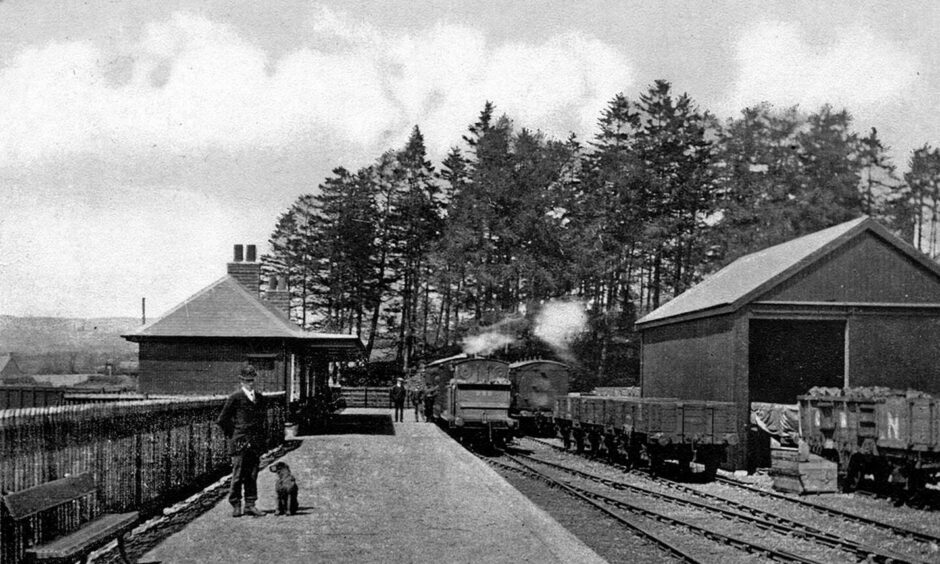
Rare images of the long-lost Bankfoot railway line and the final years of steam have been brought to life in a new book.
The railway station served Bankfoot from 1906 until September 1964.
This branch railway began at Strathord junction, leaving what was then the main Inverness-Aberdeen line, and traversed three miles to terminate at Bankfoot.
Just about every man, woman and child in town visited the new amenity and there was a great clamour for tickets – 71 people got one for the very first train on May 7 1906.
Passenger trains ran from 1906 until April 13 1931, but during those years buses were gradually making an impact and were to signal the end of the steam locomotives.
From 1931 to 1964 it was a goods line that served the farming community.
The platform and terminus building survived and, latterly, served as a milk bar adjacent to a caravan site before it was swept away to make room for a housing estate in 1995.
Old Bankfoot and Waterloo author David Pettigrew said: “With origins dating back to the 1500s, Bankfoot dates from about 1815, as does the nearby hamlet named after the then-recent Battle of Waterloo.
“The village lies on an old coach road and, in the 19th Century, acquired a post office, an inn and a large linen works which was a big employer.
“As things have come and gone, Bankfoot’s population has fluctuated but today it has settled down as a quiet dormitory town for the nearby city of Perth.
“The book also tells the story of Robert Nicoll, a local poet in the 19th century who was once thought to be the equal of Burns, but died young before fulfilling his potential.
“This illustrated history contains over 50 fantastic old photos of the town.”
Bankfoot Railway Station
The following images from the 48-page book offer a unique insight into rural life from a period spanning over 100 years and are sure to stir up nostalgic feelings.
By the 1890s Bankfoot had become a popular destination for day trippers and in 1895 locals petitioned the Highland Railway to open a line to their town.
David said: “This did not come to fruition but in 1896 the Light Railways Act was passed and a company was formed to build a light railway from Bankfoot to join with the Caledonian Railway’s Perth to Aberdeen main line at Strathord.
“It was popular right from the start: the first train was packed with locals excited to try it for the first time.
“It wasn’t only for human passengers, though; the line was a crucial link for local farmers, bringing livestock feed in and taking cattle for market out.
“Alongside the station building there was a 400-foot platform, as well as a goods shed and sidings.
“The book has six very rare and fascinating photos of the station.”
Rolling stock and power were initially supplied by the Caledonian Railway, which took over the line in 1912.
David said: “The Caledonian itself became part of the London, Midland and Scottish Railway during the ‘grouping’ of Britain’s many railway companies in 1923.
“Nonetheless, passenger numbers were generally low and the station closed to them on April 13 1931 — goods services went on for another 33 years.”
The New Inn Hotel
The New Inn stood just opposite the junction to the road to Moneydie and was visited by Queen Victoria in the 1840s — she even wrote in her diary that Bankfoot was her first sight of the Highlands.
Other famous visitors to Bankfoot have included Sir Walter Scott, the painter Sir John Millais, the Crown Prince of Japan in 1901 and Queen Elizabeth II.
David said: “In the fields opposite the inn was the nine-hole course of the short-lived Auchtergaven Golf Club, ploughed up for the war effort in 1941.
“The site is now taken by modern houses.”
Auchtergaven Parish Church
The landmark sight of the Auchtergaven and Moneydie Church looked over the town up until it was destroyed by fire on February 25 2004.
For years the tower remained but it partially collapsed after heavy rain in the winter of 2019 and was subsequently demolished.
The cottages to the left of the church were later replaced by houses on Highfield Place.
Bankfoot Inn
Bankfoot Inn dates back to the 1760s and allegedly is haunted by a number of ghosts.
David said: “In the days of horse and cart, coffins from hearse coaches were stored overnight in the stables.
“According to the inn’s website, the building has long been haunted by a variety of ghosts including that of a little girl, an old woman and something known as ‘the thing’.
“There have also been reports of mysterious voices in the laundry room and of taps turning themselves on.”
Waterloo village
The houses of Waterloo were built from 1815, supposedly to house soldiers returning from the famous battle.
David said: “In days gone by, the place was so rural that coming to it was said to be like ‘arriving in another world’.
“Very little is recorded about the community but in the early 1900s there was a grocer shop housed in an old black bus.”
Auchtergaven Public School
Still an important part of the community today, Auchtergaven Primary School is named after the parish in which Bankfoot stands and was built in the 1870s, after the 1872 Education Act made education for children mandatory.
The highest roll recorded was 231, in 1914.
The school building is still in use with a roll of 126 pupils in 2022.
Garry Place
This bridge at the end of Prieston Road still stands.
David said: “What’s gone is the prisoner of war camp that once stood opposite, where the houses of Garry Place now stand.
“The Italian POWs kept there got on well with the locals and some were allowed to do odd jobs and chores around the town.”
The book is part of Stenlake Publishing’s long-running series of ‘Old Town’ books, which look at communities passed over by more general Scottish histories – every place has a fascinating story behind it and Bankfoot is no exception.
David concluded: “This is also the first time that so many photos of the town from decades gone by – many of them very rare – have been gathered together in one place.”
- Old Bankfoot and Waterloo by Stenlake Publishing is on sale now.
